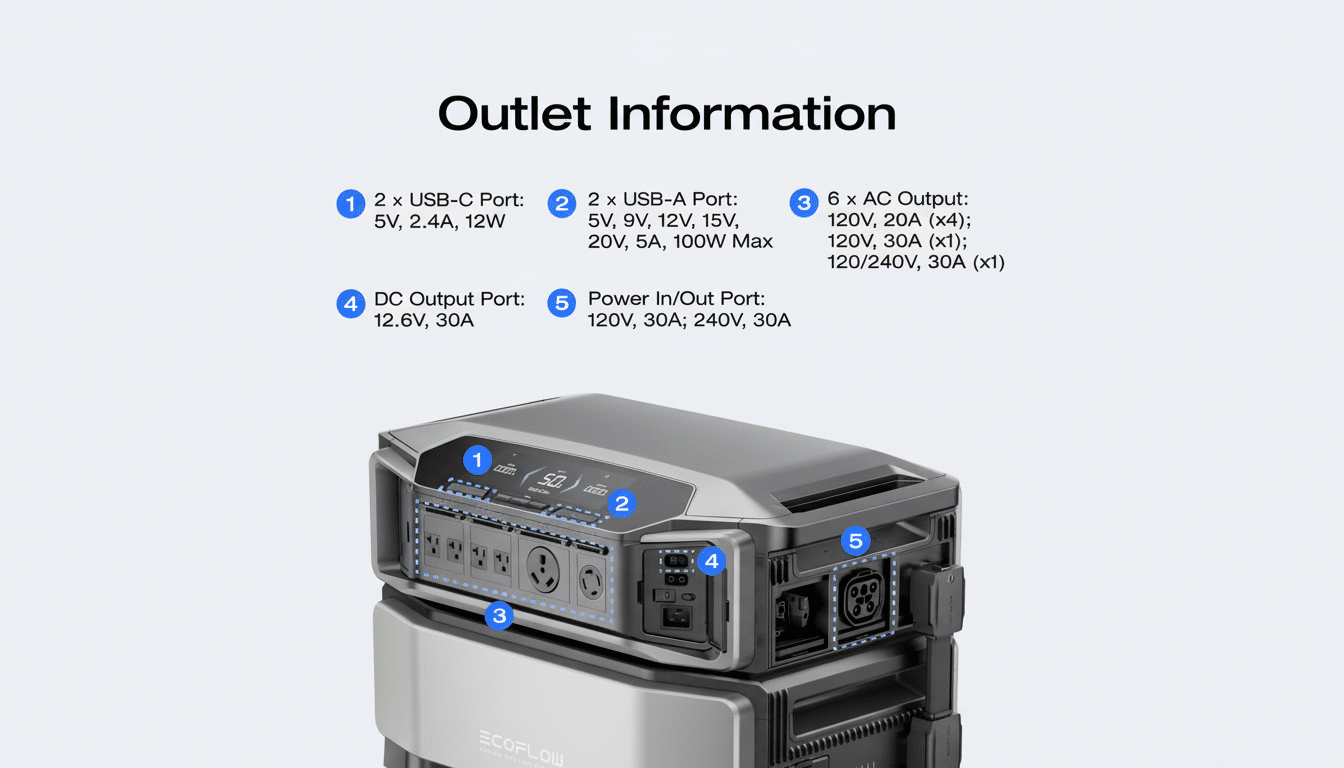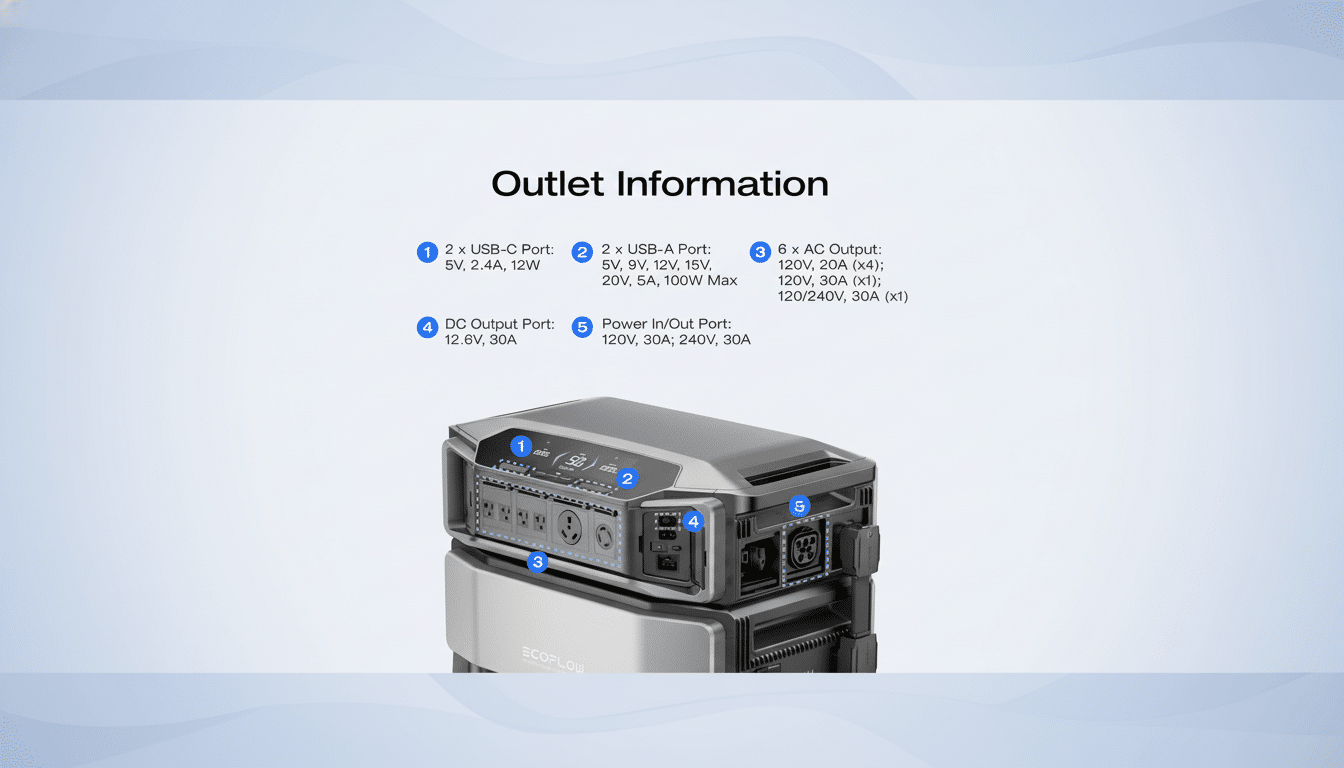EcoFlow’s new Delta Pro Ultra X is a whole-home backup system built to keep critical circuits powered for weeks, not hours. The company weds brawny output, expandable storage, solar input and a smart load controller to dispense what many households would prize in the event of an outage: reliable power without a costly and months-long installation.
How a Month of Backup Power Is Actually Possible
“A month” is all dependent on what you are powering. The typical home in the United States consumes something like 877 kilowatt-hours every month — far more than any single battery pack can support. But not every family requires everything during an outage. If you favor the critical loads — refrigeration, lighting, internet access, a gas furnace blower, a medical device — daily consumption could be as low as 6 to 8 kWh. For 30 days of consumption, that’s 180 to 240 kWh. With the Delta Pro Ultra X set to its full 180 kWh capacity and harnessed to some shrewd load management, a month on essentials transforms from marketing claim into a feasible plan.
- How a Month of Backup Power Is Actually Possible
- Power Output and Expandable Storage for Larger Homes
- Smart Runtime Data and SureSine™ Load Management for Extended Runtime
- Solar input and fast recharge for daily resilience
- Installation in days, not months, with certified pros
- Who it’s for and key considerations before choosing

Solar stretches autonomy further. In a lot of parts of the United States, homes get 4 to 6 peak sun hours a day, according to the National Renewable Energy Laboratory. A suitably sized array can keep you topped off during daily draws, and may be adequate to recharge the reserves in an extended outage.
Power Output and Expandable Storage for Larger Homes
The Delta Pro Ultra X is a 12 kW continuous supply, but can be scaled up as high as 36 kW for larger homes or if there is a lot of power being pulled all at the same time. That’s a 60% increase over the previous-generation power system, and that should allow headroom for some of the most demanding appliances that tend to otherwise require heavy grid use—such as induction ranges, electric water heaters, deep-well pumps, or Level 2 EV charging when necessary.
Storage is modular and extensive. Households can start at a smaller size for just essential circuits, and expand up to 180 kWh as needs increase — which is enough to weather long blackouts when combined with conservative use of electricity and solar input. According to EcoFlow, there’s a 97% energy conversion efficiency, so the remaining losses are minimal; otherwise, they appear as heat and wasted capacity.
Smart Runtime Data and SureSine™ Load Management for Extended Runtime
The system’s brain is the companion Smart Home Panel 3. Made for 200 A service and with the capacity for 32 controlled circuits, it will automatically manage loads by prioritizing essential ones over noncritical loads when electricity is scarce. Targeted control like this can increase runtime during critical periods. EcoFlow adds that targeted control can extend runtime during critical periods by up to 42%, and it’s in line with utility research: strategically shedding load will leave more battery reserves than a single, all-on backup feed.
It is also more comfortable to have granular control over the circuits. You may be able to leave a fridge, networking equipment and some lighting running all the time while cycling heavier users (things like clothes dryers or space heaters) on and off when the state of charge allows it.
Solar input and fast recharge for daily resilience
The system is designed to take an input of up to 10 kW of solar. In strong sun, EcoFlow says the charger can top off two batteries from empty to 80% in less than one hour — handy for when clouds part or a generator handoff wraps up. This can, of course, vary day-to-day depending on azimuth and altitude, shading, weather patterns at that location, etc., but NREL data suggest many roofs can easily contribute tens of kWh every single day or more—which could sustain life (if needed) indefinitely.

Its high efficiency as an inverter is good for this, too. Less so-called “conversion loss” between your DC storage, solar PV and AC loads means more of what you generate can actually be used by your appliances.
Installation in days, not months, with certified pros
Whole-home batteries can also stall at permitting, design and finding an electrician. EcoFlow is working to speed that along with a network of more than 425 certified installers who cover most states. The company says installations can be scheduled within seven days, and that the on-site work is generally finished in a single day by certified electricians. That makes an impact in areas experiencing increasingly frequent grid disruptions — whether caused by winter storms in Texas or wildfire safety shutoffs in the West.
Pricing reflects the system’s ambition. A Delta Pro Ultra X package, which includes an inverter and two batteries, begins at $7,999. The Smart Home Panel 3 is $2,999 and a full package is $10,899 for a limited time. Although not cheap, owning a system that can pull double duty as peak-shaving or time-of-use arbitrage — popular tariff structures regulated by state utility commissions — can pay for itself over the long term.
Who it’s for and key considerations before choosing
If you’re looking for seamless, unobtrusive backup with no fuel logistics or exhaust, the Delta Pro Ultra X makes a compelling case. It’s particularly well suited to homes with gas heating (less demand on the electric draw), existing or planned solar power and a desire to run some select 240 V appliances during outages. All-electric heated homes or those with high continuous loads can still benefit but should size capacity accordingly, or level up acceptance of traditional load shedding.
As with any whole-home system, confirm panel capacity, local permitting and code compliance under the National Electrical Code with your installer.
You can also pressure-test the “month” claim against your own essential loads. A rough estimate:
- Refrigerator: 1 to 2 kWh/day
- Lights and electronics: 1 to 2 kWh/day
- Gas furnace fan: 0.5–1 kWh/day
- Networking and chargers: less than 1 kWh/day
This illustrates how sober planning takes headline longevity and makes it tangible resilience.

